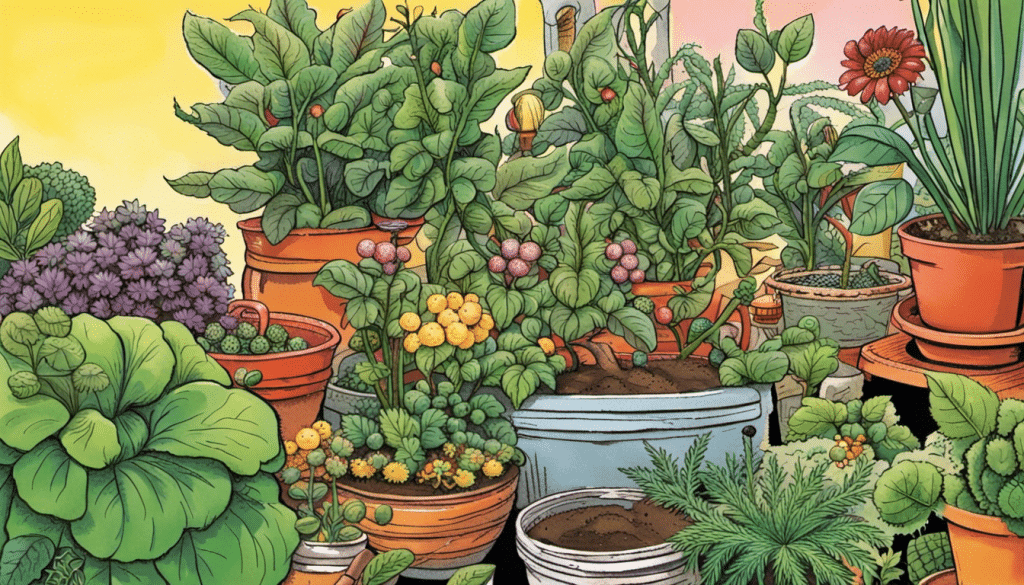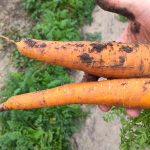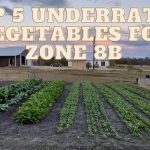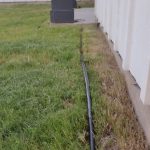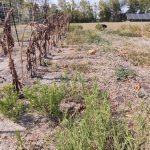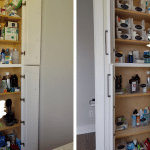A Simple Gardening Guide On Everything You Need To Know To Get Started.
For beginners, sometimes diving into the world of gardening can feel overwhelming. There’s so much info out there on all sorts of plants, tools, and techniques, and it can be hard to know where to start. But, fear not! Starting a garden doesn’t have to be a big, complicated procedure. In today’s post, we’re going to cover and walk you through the process of starting your very own beginner garden. We’ll break it down into simple steps to help you navigate what order to do things in and what decisions you will need to make to set everything up. By the time you finish reading this, you’ll be ready to take on your own garden like a pro!
What And Where? – Choosing The Right Location For Your Garden Plot
So you’ve decided you want your own garden. There are two things you’ll need to figure out first. What you will be planting your plants in and where those containers or beds will go in relation to the sun and surrounding area. So, let s break it down.
What Should You Grow Your Plants In?
Starting with what to plant in, there are a few options to choose from – containers, raised beds, or in-ground beds.
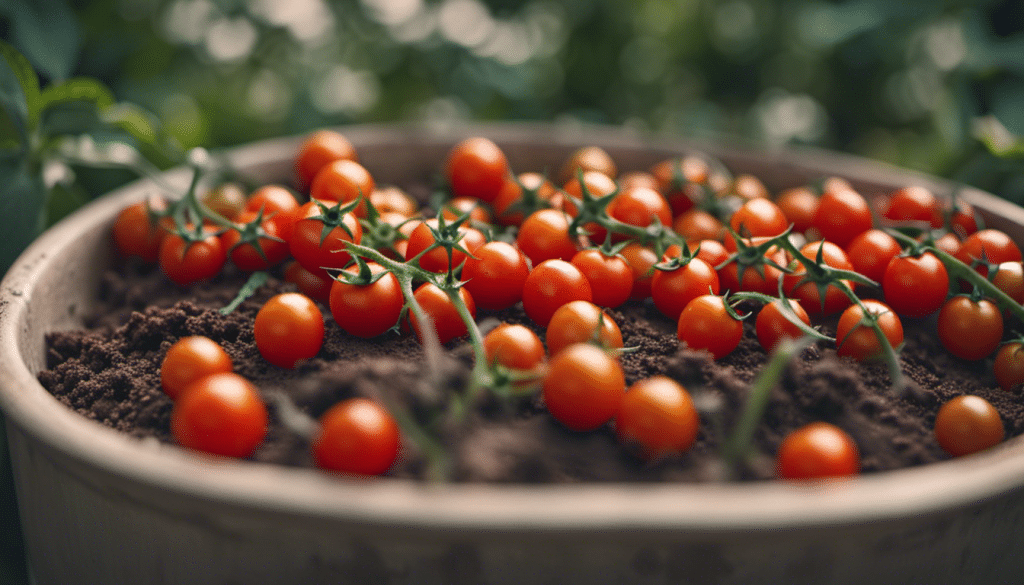
Containers
Containers are great for having some variety in your garden and come in all sorts of shapes and sizes. But with all of the choices, it is easy to overspend on containers, so bear in mind your budget and get the biggest one that works for your space and budget. You can always upgrade later if you need to.
Raised Beds
Raised beds are great for beginners and can be relatively affordable especially if you build them yourself. Raised beds also give you enough room to grow a decent crop without being too much to handle. When going with raised beds look for ones that are 4-5 feet wide and as long as you want or can accommodate.
In-Ground Beds
In-ground beds are great if you have room for them and give you a lot of flexibility. But keep in mind that planting into the existing soil comes with its own complexities. So for the scope of this post, we are not going to be going down this rabbit hole. In addition, we will not be going into a lot of detail when it comes to planting in the ground and/or an in-depth soil discussion.
Where Should You Put Your Chosen Garden Containers?
Now, let’s talk location. Most important – your garden should get plenty of sunlight, with at least a minimum of 6 hours a day. In addition, you will want to choose an area that has good drainage and easy access to water. You’ll want the location to be easy to get to and work on, so keep that in mind. If you’re doing an in-ground bed, try to avoid spots that get hit with strong north winds or gusts.
Keep In Mind Your Time…
Remember to keep in mind how much time and space you have before you get started. You don’t want to bite off more than you can chew and end up with a garden that’s too much to handle. Start small and work your way up. The beauty of gardens is that you can always go bigger next season. So, stick with the basics find the right containers and location and you are one step closer to getting started with your garden.
When To Plant? What Zone And Season Are You In?
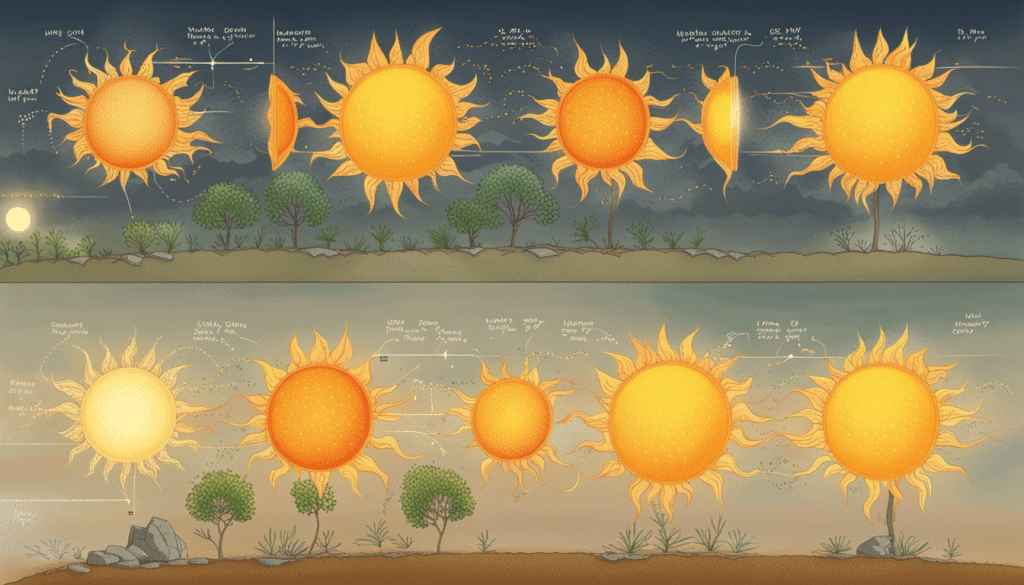
After you’ve selected the perfect location for your garden, it’s time to figure out your gardening zone. Your climate determines your gardening zone and that can help you choose which plants will thrive in your garden.
Since different plants have varying temperature needs, some can only be grown in certain zones. It’s crucial to pick plants that are a good match for your gardening zone to increase their chances of survival. You can quickly figure out your gardening zone by examining a gardening zone map or chatting with your local gardening center or cooperative extension office.
By selecting plants that are ideal for your gardening zone, you’ll be setting yourself up for gardening success. Don’t sweat it if you can’t cultivate every plant – there are loads of striking and tasty plants to choose from that do well in your gardening zone. If you are located in zone 8b check out this post where I go into more details when it comes to gardening in this zone.
What Vegetables Or Fruits Should You Choose?
So, now that you know what you are planting in and where you are going to be putting your garden at. Next comes the exciting part. Picking what vegetable plants you’ll be growing. With so many plants to choose from, it can be overwhelming to decide what to grow. But we’ll go over some things to consider when selecting plants for your new garden.
What Vegetables Do You And Your Family Like?
First off, think about what veggies you and your family actually like to eat. There’s no sense in growing something that you won’t enjoy or use. Make a list of your favorites and rank them based on your family’s preferences. If your crew isn’t into spicy foods, steer clear of hot peppers. If they can’t stand beets, don’t bother planting them. Grow only what you will use and enjoy. Otherwise, you are just wasting your money and time. I know this probably sounds like a “duh” point to cover but you’d be surprised how often beginner gardeners grow vegetables because they feel they need to grow as part of a spring or fall garden. I personally don’t like tomatoes, but my family does so we grow them for that reason. If it was up to me I’d skip them altogether and just plant more potatoes.
Spacing Your Vegetables
Another important factor is space. Depending on the plant, you’ll need varying amounts of room. Some vegetables will need plenty of space to spread out, while others can grow in smaller areas and do great in containers and raised beds. Consider the size and shape of your garden bed and then choose your plants. If you are growing vegetables in containers and raised beds, you can still plant vegetables that need more space you may just need to play around with how many plants you plant. Below I’m listing some examples of popular vegetables and their space requirements.
Plants That Require More Space
- Tomatoes – Tomatoes are a popular vegetable for many gardeners, but they do require quite a bit of space. Depending on the variety, tomatoes can grow quite large and bushy, so it’s important to give them plenty of room to spread out. It’s recommended to give each tomato plant at least two to three feet of space. To help keep your plants healthy tomatoes require a lot of airflow which is why you want to give them plenty of space.
- Squash – Squash plants, including zucchini and pumpkins, can also grow quite large and require a lot of space. They are also prone to spreading out and taking over other parts of the garden, so it’s important to give them plenty of room to grow. Giving each squash plant at least three to four feet of space is recommended.
- Cucumbers – Cucumbers are another vegetable that requires quite a bit of space when planting. They can grow quite tall and wide, so it’s important to give them plenty of room to spread out. Giving each cucumber plant at least two to three feet of space is recommended.
- Melons – Melons, including watermelons and cantaloupes, require a lot of space to grow. They can spread out quite a bit and require a lot of room for their vines to stretch. Giving each melon plant at least four to six feet of space is recommended.
With some of the above plants, you can also train them to grow upright on a trellis which will free up some space. So if you really want to grow some of these varieties and are growing in containers don’t worry, you can still do it, you’ll just have to plan it out.
Plants That Require Less Space
The plants below require less space and are ideal for growing in containers and raised beds. Because they don’t need as much space as the plants above you can sometimes plant them more densely and have quite a good yield.
- Leafy Greens- Leafy greens such as lettuce, kale, and other plants that have a similar growth pattern are a great option for small spaces because they don’t require much room to grow. You can these seeds in containers or raised beds, and it’s even possible to grow them indoors. These plants also grow relatively quickly, so you can harvest them quickly.
- Root Vegetables- root vegetables are another vegetable that can be grown in small spaces. They can be planted in containers or raised beds. Sometimes, with root vegetables you can plant them more densely, however, you may get smaller plants as a result.
- Peppers – Peppers can be grown in small spaces as long as they receive plenty of sunlight. They can be planted in containers or raised beds, and they don’t require a lot of space.
- Green beans – Green beans are another vegetable that can be grown in small spaces. They can be planted in containers or raised beds, and they don’t require much space to grow. Green beans also grow relatively quickly and produce a lot of beans, so you can get a good harvest in just a few weeks.
Direct Seed or Transplant
There are two methods of starting your plants in your garden. Direct seeding means that you take your seeds and place them directly into the soil where the plants will grow. On the other hand, transplants are plants that have been started previously indoors or in a greenhouse and once they are large enough you transplant them into the garden soil. There are pros and cons to each that I will list below. However, as a beginner gardener, it is best to start with transplants, and then scale up as you gain experience and want to experiment with different varieties.
| Direct Seeding | Transplants | |
|---|---|---|
| Pros | ||
| Economical | Allows for earlier planting | |
| Plants establish stronger roots | Greater control over the growing environment | |
| No transplant shock | Higher success rate with finicky plants | |
| Cons | ||
| Vulnerable to weather | Requires additional time and resources such as lights, trays, and watering gadgets | |
| Greater risk of pests and disease | May suffer transplant shock | |
| Limited growing season | Can be more expensive |
Direct seeding is an economical way to start a garden if you want to plant a lot of plants. It works best for plants that are easy to grow from seeds. It allows you to place them in their permanent location without additional work and no shock to the plant. The downside, to direct seeding is you take a chance with the weather, and have a higher risk of pests and diseases as the plants need time to establish and it can sometimes limit your growing season as you are limited to the temperatures at which the seeds will germinate.
Transplants, on the other hand, are great because you can get a head start on your plants, they will be bigger and will produce earlier. You have control over the temperatures for the germination of seeds and therefore you can have a higher success rate with plants or seeds that can be difficult. Take note that not all plants can be transplanted. Some vegetables do not like to have their roots disturbed and the best way is to just direct seed them. The cons of transplants are it requires more equipment which means more money and if you are just starting out you may not want to spend it on an indoor growing setup. In addition, to an increase in cost, you will also need to spend more time on watering and caring for the seedlings. When you do transplant them they will experience transplant shock and you could potentially lose some. Lastly, because you are purchasing plants that someone else started you may pay more but at least you won’t have to store equipment you may never use again if you decide gardening is not something you want to continue with.
What Are The Maintenance Requirements For Your Vegetables?
Another factor to consider when you choose plants for your garden is their maintenance requirements and upkeep. Some plants require attention, like regular pruning, fertilizing, or pest control. These high-maintenance plants can be very rewarding, but they do require more time and effort to keep them healthy and thriving. Some examples include tomatoes, corn, and eggplant to name some.
On the other hand, there are low-maintenance plants that only need a little water and weeding. These types of plants are perfect if you don’t want to or don’t have a lot of time to devote to upkeep, but still want to have a garden. Examples include peppers, sweet potatoes, and cucumbers to list a few.
It’s a good idea to consider how much time and effort you’re willing to commit to maintenance when choosing your plants. If you’re not sure, start with a few easy-to-grow plants and work your way up to more challenging ones as you gain experience and confidence. Remember, gardening is supposed to be enjoyable, so don’t let it become a burden by choosing plants that require more maintenance than you’re willing or able to give.
Water Requirements
All vegetables are going to require water. The amount of water each plant requires depends on the plant as well as your local area and the time of your planned planting for example spring, summer, or fall. Watering your plants is a crucial part of gardening and one that I recommend you spend some time automating. The upfront work of setting up an irrigation system will save you time in the long run.
You will want to select plants with similar watering needs. Also, keep in mind that some plants are ok with getting their leaves wet and others don’t care for it. So when planning your layout you will want to keep those things in mind.
Another important consideration is the location of your water source. Make sure it’s close enough to your plants that you can easily water them as needed. If you’re using a hose, consider installing a timer or set-up an irrigation system.
When it comes to setting up an irrigation system you’ll need to decide what type of irrigation system is best for you and your garden. Drip irrigation and soaker hoses are ideal for small gardens and container plants, while sprinklers work best for larger gardens but can also be utilized as a part of the drip irrigation system. Next, you should create a layout of your garden and determine the areas that need to be watered. This will help you determine the number of drip lines or sprinklers you will need. Once you have a plan you can go and purchase your supplies and set it up. The great thing about going this route is that it can be mostly reused in future plantings as long as your overall layout stays the same.
Sunlight Requirements
Lastly, don’t forget about sunlight. Sunlight is essential for the growth and overall health of plants. However, not all plants have the same sunlight requirements. Some plants require full sun, meaning at least six hours of direct sunlight each day. While others can do just fine with only a few hours of full sunlight.
To figure out the amount of sunlight your garden area receives, spend some time observing it throughout the day. Take note of the areas that get direct sunlight and those that are shaded. By doing this, you can choose plants that are a good match for the amount of sunlight in your garden.
In addition, if necessary you can use plants to give shade to other plants if you want to plant something that needs more shade.
So, take a few minutes to observe your garden area and keep in mind where you want to plant your chosen plants. With the right amount of sunlight and some TLC, your garden will thrive!
Garden Plan
Designing your garden layout is a fun and exciting step in your beginner gardening journey. Now that you have picked your plants it’s time to plan your garden layout. One great way to start is by using a garden design tool, which can help you create a visual representation of your garden. Or, you can simply sketch your garden layout on paper. Either way, this will give you a better idea of how your garden will look once everything is planted and will allow you to make any necessary adjustments before you start digging.
When planning your garden layout, make sure to keep in mind the growth habits and mature size of each plant. This will help you determine the proper spacing between plants and rows. This spacing will ensure that they won’t overcrowd each other as they grow, get enough airflow, and allow your crops to produce large yields.
Preparing The Soil
As I mentioned earlier this is a complex topic, after all, people dedicate their careers to soil management. So for this post’s scope, I will briefly discuss this topic. As a beginner gardener, we recommend you start with container and/or raised beds. Soil conditions play a huge role in the health of your plants and your garden in general. So to simplify things as a beginner gardener, the best thing to do is to purchase high-quality soil from a reputable local nursery or garden center which will give you a good baseline of nutrients and minerals to get you started. Going this route is a great choice for beginner gardeners because it allows you to bypass the complexities of soil testing and amending and just be able to focus on maintaining your plants.
After you’ve added good soil, you will also need to fertilize your plants. Fertilization is an important aspect of gardening, and you’ll need to make sure your plants have access to the nutrients they need to thrive. This can be accomplished through the use of compost, manure, or other organic matter. Keep in mind that different plants have different needs when it comes to nutrients, so you’ll need to do your research to make sure you’re providing your plants with everything they need to grow and stay healthy.
When it comes to gardening in containers and raised beds, the last thing to remember is to keep an eye out for soil moisture levels as well as proper drainage. One way to measure moisture retention is to use a moisture meter and after some time you’ll be able to tell just by touching the soil. If you are adding good soil and fertilizing with compost and such those usually will retain soil moisture.
Along with soil moisture, you do want to make sure that excess water has a way of draining out. Plants don’t like to sit in water and many plants parish for this reason. So, if you notice excess water or excessive moisture make sure your container has enough drain holes and that they are not plugged up.
How to keep your plants healthy and pest free?
When you garden it is inevitable that you will have some issues with your plants. Those issues will either be some type of disease or pest related. You may have losses but the keys are involvement, prevention, and management. The best approach to pest control and disease management is to focus on prevention. A huge part of gardening is being present and checking it daily and you’ll be surprised how many things you can catch early and mitigate your damage. So, if you go outside and walk through your garden and check on it daily you will notice if there are beginning signs of an issue. For example, during one of our spring plantings, we noticed a newly planted tomato transplant that looked like someone had stepped on it. Upon further inspection, it was basically chewed at the stem. At that point, we inspected the other tomato plants and the surrounding area and we found the culprit. It was cutworms. So the damage occurred to one plant, but if no action had been taken others tomato plants would have been destroyed. If you have a problem with cutworms check out this post where we cover 4 effective ways to combat cutworms.
Another thing you will want to make sure you do is to keep your plants as healthy as possible, make sure to prune and give them enough airflow, fertilize, and add nutrients as necessary. When plants are healthy it makes them less susceptible to disease and therefore less attractive to pests.
If pest pressure and disease become a big issue then there are a variety of methods available for control. When using these methods It’s important to carefully follow instructions to ensure their effectiveness and safety. Also as a general note, any type of application for pest prevention is likely to harm beneficial pollinators, so as a rule of thumb, it is best to apply these at dusk when pollinators are not around.
Conclusion
As I mentioned earlier, as a beginner gardener all of the information can feel overwhelming. Some articles oversimplify things while other articles complicate the process. I really hope this post helps you make the best decisions on what you need to do while giving you enough information as to why you need to make those decisions. Gardening can be a lot of things, relaxing, fun, and enjoyable but it can also be challenging and difficult at times. But at the end of the day, know that every step is a learning process and with each mistake you make you will learn a ton. So keep up the great work and happy gardening.


